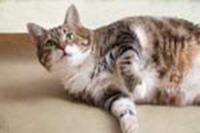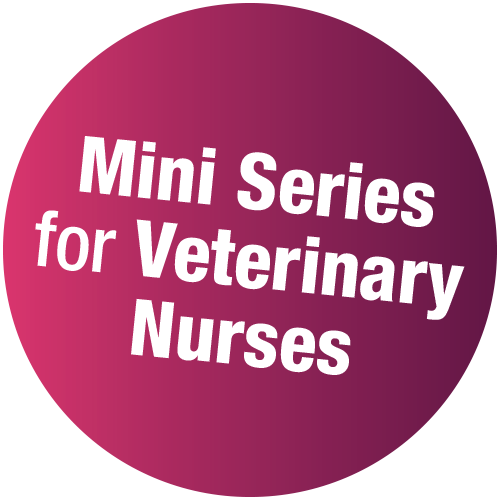MS122 – Small Animal Nutrition – Nurses
£297.00 (+VAT)
12 months access to recordings and course materials is included. Please note that these are webinar recordings and not live events. Full details on how to access the Mini Series will be emailed to you.
- Join Marge Chandler DVM MS MANZCVSc DACVN DACVIM DECVIM-CA MRCVS for three 2-hour online sessions and discover more about small animal nutrition
- Comprehensive notes to downloaded
- Self-assessment quizzes to ‘release’ your 8 hours CPD certification (don’t worry, you can take them more than once if you don’t quite hit the mark first time)
- A whole year’s access to recorded sessions for reviewing key points
- Superb value for money – learn without travelling
- Watch the recordings on your iPad!
Programme
Obesity – Why is Controlling Weight So Hard?
Obesity is the most common nutritional disorder in companion animals in many countries, affecting around half of our pets. Obesity results in a chronic state of inflammation. It is linked to musculoskeletal problems, compromised immune function, feline diabetes mellitus, and increases the risk for anaesthetic and surgical complications, heat or exercise intolerance, decreased pulmonary function, dermatological disease, neoplasia, urogenital disorders. It also contributes to clinical signs of tracheal collapse and laryngeal paralysis in dogs and worsens feline asthma signs. The cause is an imbalance of calorie intake and expenditure; however, the aetiology is multifactorial and not as simple as sometimes stated. Many owners don’t recognise their pet is overweight, which makes treatment more challenging. Genetics and the intestinal microbiome play a part in the pathology of obesity. The planning and follow up of a weight management programme are essential for weight loss and maintenance.
What you’ll learn:
- Understand and improve owners’ recognition of overweight and obese pets
- Understand the increased risk factors for diseases, decreased life quality and shortened lifespan due to obesity
- Understand the state of chronic inflammation associated with obesity
- Understand the complex aetiology of obesity
- Understand why weight loss is hard to maintain
- Be able to council owners on the approach to weight loss in their pets
Alternative and Raw Diets – What is the Evidence?
The feeding of home-made and raw meat based diets to dogs and cats has received increasing attention in recent years. Raw meat based diets can be divided into two main categories: commercial and home-prepared. Proponents of these diets claim health benefits for the diets, which are so far largely unproven and not based on scientific research, but seem plausible to well-intending pet owners. The vast majority of homemade diets, including raw diets, are not complete and balanced, and do not meet AAFCO, NRC or FEDIAF standards; this includes diets published in books and websites. Much of the raw poultry and meats bought for human consumption are contaminated with bacteria as it is assumed that they will be cooked. The FDA is currently investigating prevalence of pathogenic bacteria in dog and cat foods labelled as raw and sold through retail stores. When handling raw food the preparer must be scrupulous in hygiene, and small children, the elderly, and the immunocompromised should not be handling it. The feeding of whole bones will not balance the diet and may cause oesophageal or intestinal obstruction and dental damage. The cleanliness standards for raw commercial diets are higher, although few of them meet AAFCO, NRC or FEDIAF requirements. Good research into feeding of raw diets is very limited.
What you’ll learn:
- Be able to recognise the quality of evidence and information about pet foods
- Understand the different rationales which owners may have for preparing pet foods at home
- Understand the metabolic differences between wolves and dogs
- Understand why home-made foods are often not complete and balanced
- Identify the potential contamination risks of feeding raw foods to the pet, owner, environment and public
- Understand the differences between commercial complete and balanced and home-made raw foods
- Understand the risks of feeding bones and the lack of evidence for feeding bones on dental health
Clinical Nutrition – Feeding Hospitalised Dogs and Cats
The main goals of nutritional support for hospitalised patients are to prevent or slow the use of endogenous protein for gluconeogenesis, sometimes termed ‘protein sparing’ and to try to maintain the patient’s weight. In thin animals, weight gain may seem preferable, but in an ill animal that is in a catabolic metabolic state this may not be a realistic goal initially. The metabolism of starvation in ill or injured individuals differs from those who are otherwise healthy but not fed. Over-feeding can also be detrimental. Nutritional assessment to determine what and how much the pet has been eating is essential. The patient’s disorders will also guide the decisions about hospital feeding management. The feeding protocol should describe exactly what is to be fed, how much, how frequently and by what route. Oral and enteral nutrition are always preferred over parenteral, but there are cases where parenteral may be the primary feeding route or used as adjunct to enteral feeding.
What you’ll learn:
- Understand the metabolic differences between fasting in healthy and ill or injured pets
- Understand the goals of feeding hospitalised patients
- Be able to identify which patients require supplemental nutrition
- Be able to calculate the energy requirements of hospitalised patients
- Be able to choose a route for feeding hospitalised patients
- Understand the use of tube feeding and the appropriate feeding protocols for tube feeding
- Understand the appropriate use of parenteral nutrition
- Understand the use of microenteral feeding
The price includes all 3 sessions, notes and quiz – 8 hours of CPD
*No traffic jams, accommodation hassles, pet or childcare, rota clashes, locum fees ……….. just great CPD and a valuable ongoing resource.
Course Feedback :
“I found the in depth information regarding the importance of different nutrients in different cases helpful to learn. As well as how to talk to clients regrading RAW diets.”
“I will now feel much more confident discussing the pros and cons of feeding a raw/homemade diet.”
“I will use all of the information gathered regarding alternative/raw diets and also feeding hospitalised patients and share this information with my colleagues to ensure we are all nursing safely and to as higher standard as possible.”



